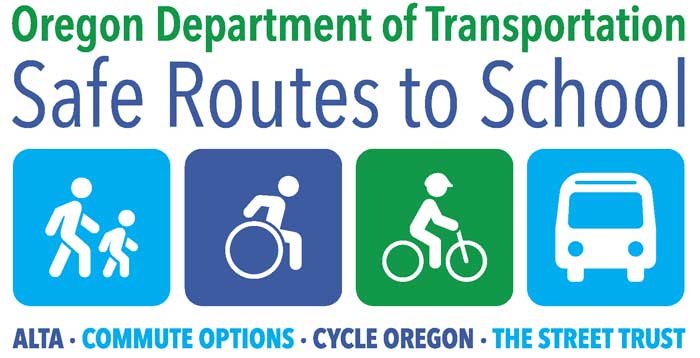Create a SRTS Plan
The Oregon SRTS Program recommends completing a SRTS plan for your school. A SRTS plan can identify barriers and hazards impacting walking and rolling opportunities, and set goals for increasing the number of students choosing to walk and roll. It is a valuable tool to strategically plan for and apply for grants from other funding sources. In addition to SRTS plans, implementation plans can create a guide for the continued promotion of the SRTS programs with specific focus on education programs. They work in conjunction with SRTS plans with the intent to direct the program for years to come.
On the Construction Program side, Technical Assistance Grants are available for consultant services to work with communities to develop formal SRTS Plans (Planning Assistance) and to implement high-priority plan recommendations (Engineering Assistance and Surface Treatments). On the Education Program side, Tier One Grants are available, which include a year of consultant support to develop an Implementation Plan. You can learn more about grant opportunities by clicking this link. Examples of final SRTS and Implementation plans are provided below.
Examples of final SRTS and Implementation plans are provided below. Plans are ordered by ODOT Region (counties listed):
Region 1 (Clackamas, Hood River, Multnomah)
Region 2 (Benton, Clatsop, Columbia, Lane, Lincoln, Linn, Marion, Polk, Tillamook, Washington, Yamhill )
Region 3 (Coos, Curry, Douglas, Jackson, Josephine)
Region 4 (Crook, Deschutes, Gilliam, Jefferson, Klamath, Lake, Sherman, Wasco, Wheeler)
Region 5 (Baker, Grant, Harney, Malheur, Morrow, Umatilla, Union, Wallowa)
Use the tools below to help develop your SRTS plan.

Walk audits are a great tool to gather information about street conditions, engage community members, and inform planning and traffic safety projects. Use the National Safe Routes Partnership’s Get to Know Your Neighborhood with a Walk Audit guide and download the Inclusive Walk Audit Facilitator’s Guide here.
Action Plans can help communities gather data to understand obstacles and opportunities for walking and rolling to school and make plans for both construction and education improvements. ODOT no longer requires a specific Action Plan template, but many communities have developed similar resources. Here are some examples:

Caregiver surveys provide information about how families travel, the barriers they experience to walking or rolling to school, and other attitudes around active transportation. Download a survey template here, access the survey digitally here..
Student travel tallies (hand tallies) capture how students travel to and from school and provide a snapshot of student travel behavior at each school, as well as contribute to tracking larger trends across the county and over time. Download a tally here.

